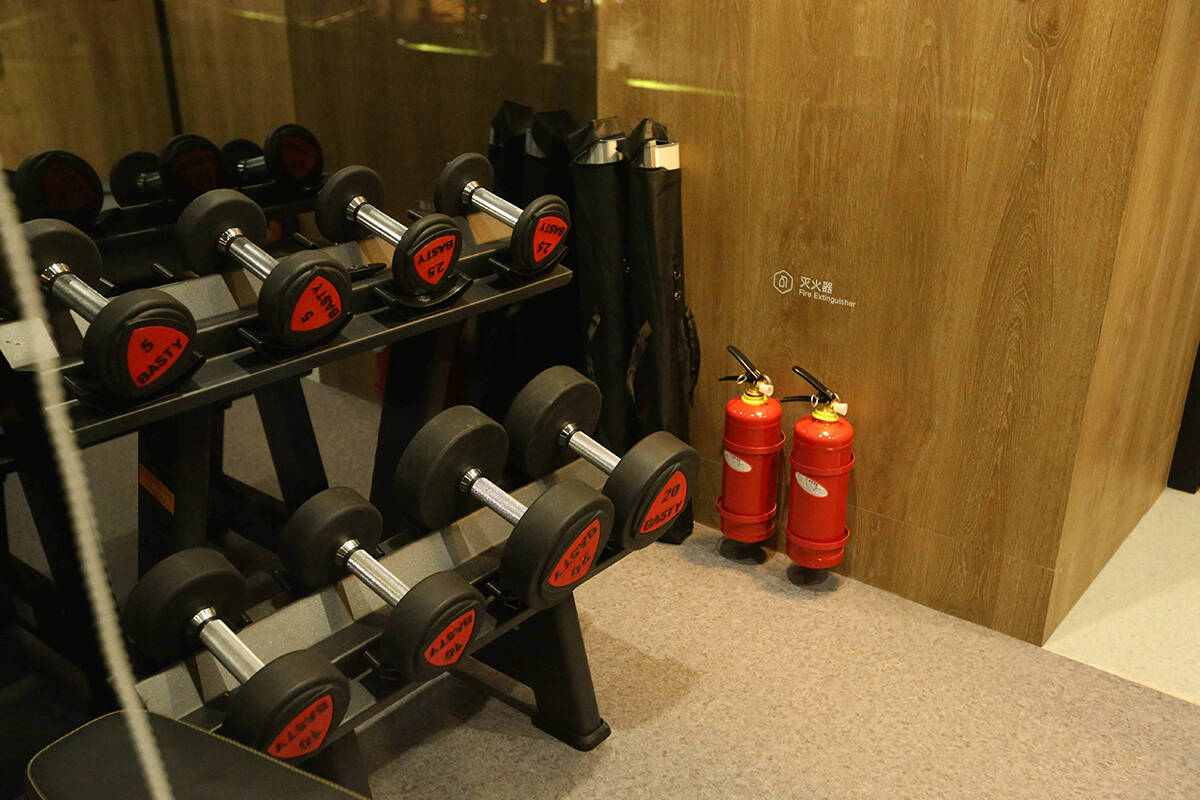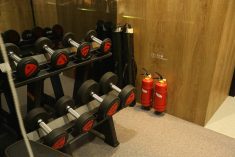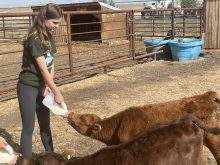Last time, I wrote about easy recipes for expectant mothers, working parents and for other busy times. This is one of the recipes we received from B.C. in Saskatoon.
Chicken broccoli delight
4 chicken breasts
(boneless, skinless)
1/4 cup peanut butter 60 mL
11/2 cups mild salsa 375 mL
1 cup diced tomatoes 250 mL
1 tablespoon soy sauce 15 mL
juice of a lime or lemon
1 teaspoon basil 5 mL
salt and pepper to taste
2 cups fresh vegetables, 500 mL
Read Also

Well-being improvement can pay off for farms
Investing in wellness programs in a tight labour market can help farms recruit and retain employees
chopped (eg. broccoli, carrots, onion, peppers)
1/2 cup whole wheat 125 mL
macaroni
shredded cheese
Stir together the peanut butter, salsa, diced tomatoes, soy sauce and juice. Marinate the chicken in this mixture.
Cook the chicken for 45 minutes in an electric frypan on medium heat, or for 11/2 hours in the oven at 375 F (190 C). Then add spices, fresh vegetables and macaroni and cook for another hour or until the vegetables and pasta are cooked.
Top with shredded cheese and bake 10 or 15 minutes more.
Variation: Use cooked chicken chunks as a way to use up leftovers rather than starting with uncooked chicken breasts.
Bev’s favourite salad
We had friends over last week and I made one of my variations of spinach salad. We discussed how versatile this recipe is using quantities and variations that suit your taste buds and the number of guests:
baby spinach leaves
fruit (eg. mangoes)
cheese (eg. goat cheese)
nuts (eg. cashews)
fruity vinaigrette dressing
Tear the spinach leaves, peel and chop slices or small chunks of fruit and cheese, top with nuts and serve with a fruity vinaigrette dressing, poppy seed dressing, or your own favourite dressing.
I also made this salad for Thanksgiving dinner at Jaime and Troy’s home in Calgary. For dessert, Troy made a recipe, adapted from a Better Homes and Garden publication.
Pumpkin cream cheese pie
1 deep dish unbaked shortbread or graham wafer crust
8 ounce package cream cheese 250 g
1/3 cup granulated sugar 75 mL
1 egg
1 teaspoon finely shredded 5 mL
orange peel
14 ounce can pumpkin 397 mL
3/4 cup granulated sugar 175 mL
2 teaspoons pumpkin pie spice 10 mL
3 eggs
3/4 cup half and half cream 175 mL
3/4 cup pecans, chopped 175 mL
2 Skor bars, chopped
1/4 cup packed brown sugar 60 mL
hot fudge ice cream topping
whipped cream
pumpkin pie spice
In a medium bowl, combine cream cheese and the 1/3 cup (75 mL) of granulated sugar; beat with an electric mixer on low to medium speed until smooth. Beat in one egg, then stir in orange peel. Cover and chill for 30 minutes.
Preheat oven to 375 F (190 C). Prepare pie pastry.
For pumpkin filling: In large bowl, combine pumpkin, the 3/4 cup (175 mL) granulated sugar and the pumpkin pie spice. Add the three eggs and beat lightly. Gradually beat in the half-and-half. Spread cream cheese mixture in pastry-lined pie plate. Carefully spoon pumpkin filling over cream cheese. To prevent overbrowning, cover edge of pie with foil. Bake for 25 minutes.
In small bowl, combine pecans, Skor bars and brown sugar. Remove foil from pie. Sprinkle with nut mixture.
Bake for another 25 to 30 minutes or until a knife inserted near the centre comes out clean. Cool on a wire rack. Cover and chill pie within two hours. If desired, garnish individual serving with hot fudge topping, whipped cream and additional pumpkin pie spice. Makes 10 servings.
Going green
Since 1990, the TD Friends of the Environment Foundation has provided more than $45 million to support 17,000 environmental grassroots projects across Canada. It asked 1, 000 Canadians to grade their level of environmental friendliness. The results show 25 percent of Canadians gave themselves an A, nearly 60 percent a B, 13 percent a C and only two percent gave themselves an F.
Of the 94 percent who report that they recycle, 43 percent recycle everything and 51 percent recycle when convenient.
In other questions, 82 percent say they use reduced-energy light bulbs, almost 33 percent say they regularly walk or bike to work, 64 percent use energy-efficient appliances intheir homes and 21 percent take public transportation regularly.
Although public transportation and walking to work does not apply directly to us in the rural area, we can walk from the post office to the next shop rather than driving a block or two in town. We also can plan to drive less from one building to another on the farm. This can improve our health by increasing our exercise while helping the environment.
For more information, and to get involved in your community, visit www.fef.ca.
Source: News Canada
Green reading
So what does going green mean? My daughter sent me a new book, Ecoholic (when you’re addicted to the planet) by Adria Vasil.
This Canadian book has practical tips and notes products that help you do your part for the earth. Vasil provides ideas on what not to buy and why, and makes suggestions for great gifts, clothes, home supplies and earth-friendly consumer choices.
With two new grandchildren on the way, I am thinking more about these things now in terms of child-friendly products, including toys. We hear confusing information about plastics. Not long ago, many people were switching to plastic containers rather than using disposables. Vasil describes the different kinds of plastic and how they affect the environment.
Polyethylene terephthalate (plastic No. 1) is used to make pop bottle plastic, shampoo bottles and water bottles. It is the most commonly recycled plastic since it is thought to have fewer harmful additives that will leach into landfills.
However, Health Canada is investigating it as one of 4,000 chemicals of potential concern that were brought onto the market without full safety assessments.
Milk jugs and cleaning product bottles are usually made from high-density polyethylene No. 2, which is not a bad plastic compared to the others. It is recyclable in some areas.
According to Vasil, Greenpeace ranks polyvinyl chloride, plastic No. 3, as the biggest eco-villain. Most of our convenience foods come wrapped in it and we wrap our leftovers with PVC. It is a known human carcinogen that emits persistent dioxins in both its manufacture and incineration. If your plastic bottle has the number 3 or a V on the bottom, it is PVC and rarely recycled.
Low-density polyethylene No. 4 plastic isn’t as toxic to manufacture as other plastics, but it is not commonly recycled. Plastic No. 5, or polypropylene, is not recyclable in many municipalities. Making Styrofoam polystyrene, plastic No. 6, involves carcinogenic benzene, and it is not commonly recycled.
The hard plastic drinking bottles many of us use are made with a highly toxic chlorine gas derivative and carcinogenic solvents. Switching to stainless steel water bottles and coffee mugs is a growing trend.
Useful tips
The top 10 environmentally friendly things you can do for your children, as suggested by Vasil, are:
- Walk or bike your kids to school or ride bikes on the weekend.
- Explain to kids how pollution from cars, smokestacks and overuse of electricity make it hard to breathe.
- Make sure their toys are PVC-free to avoid breathing in off-gassing plastic softeners.
- Show them that less is more by avoiding buying and eventually trashing so many toys.
- Feed them organic foods as much as possible so they have a diet free of pesticides, hormones and antibiotics.
- Say no to processed foods high in fat, sugar and chemicals.
- Use natural shampoos, creams and soaps.
- Create a non-toxic nursery or kids’ room full of earth-loving children’s books.
- Try cloth diapers; if not, use unbleached, chlorine-free disposables.
- Teach them to love nature by going on hikes, picnics and to the park.
Eco-friendly families
This second book was written by a young mother who was inspired by the birth of her sons to create a more eco-friendly world for her young family to live and grow up in. It is called Uncorrected Manuscript … Eco-Friendly Families: Guide your family to greener living with activities that will engage and inspire from toddlers to teens. Helen Coronato writes about how overwhelmed she felt at first, not knowing where to start. Soon she discovered there are lots of ways to make small meaningful changes, such as buying recycled paper towels and buying energy-saving light bulbs.
As parents, we set the tone for the household and must lead by example.
Barbara Sanderson is a home economist from Rosetown, Sask., and one of four columnists comprising Team Resources. Send correspondence in care of this newspaper, Box 2500, Saskatoon, Sask., S7K 2C4 or contact them at team@producer.com.
















